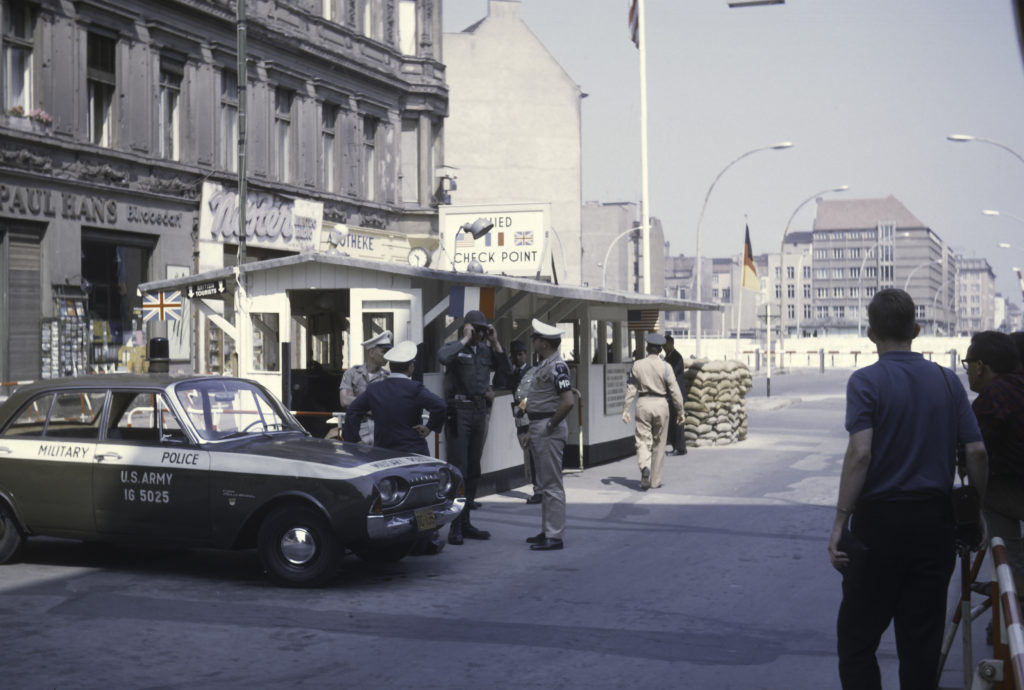In July 1964, at the end of the six-week Russian language summer school at the Institute for the Study of the USSR in Munich, those who had signed up for the two-week trip to the Soviet Union boarded a train for Berlin. There, after passing through the border crossing to East Germany, we caught a different train, bound for Moscow. In between our arrival in West Berlin and our departure from East Berlin, we were given a few short hours to see the sights, and we used them as best we could.
The Siegessäule (Victory Column)
The Siegessäule (Victory Column) is a 289-foot column with a gilded statue of Victoria, the Roman goddess of victory, on top. It commemorates the German victories over Denmark, Austria and France in the wars leading to German unification in the 19th century. It was originally built on the Konigsplatz near the Reichstag, but in 1939 the Nazis moved it to a different location, the center of the Tiergarten park, thus saving it from destruction, since the Reichstag area was heavily bombed and shelled in World War II. In its new location, the Siegessäule survived the war unscathed, and remains one of Berlin’s major tourist attractions.
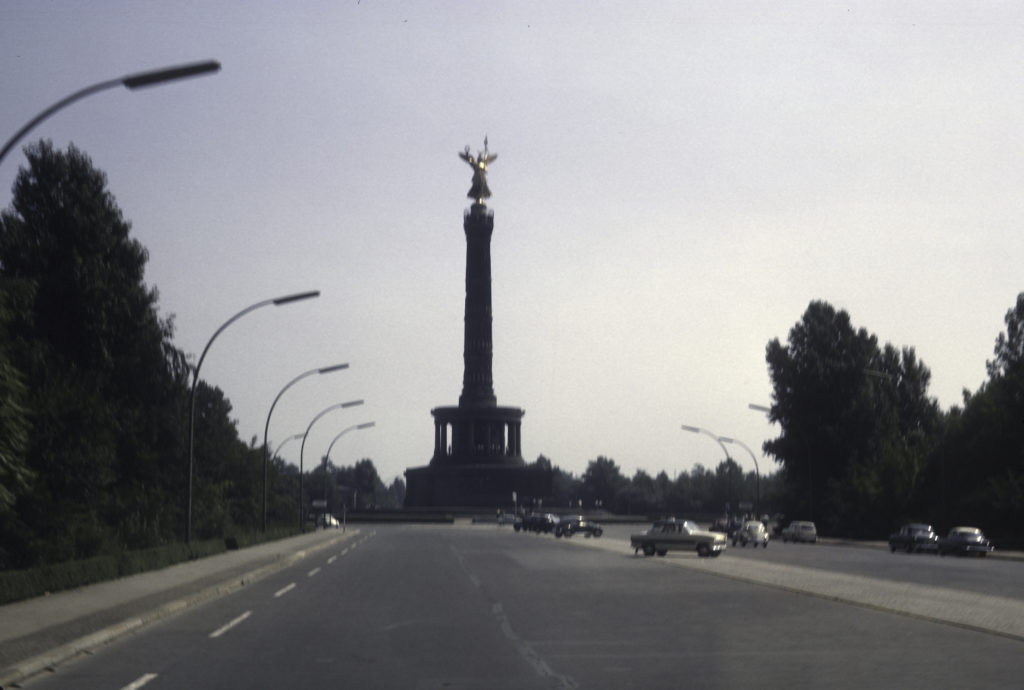
The Reichstag
The Reichstag was built in the 1890s to house the Imperial German Diet (parliament). It fulfilled the same role for the Weimar Republic after World War I, but in 1933, following Hitler’s accession to power, a fire broke out in the Reichstag, supposedly set by a Dutch communist named Marinus van der Lubbe, who was convicted and executed for the act. The fire gave the Nazis a pretext to suspend civil rights and impose a police state. The Reichstag building was not fully restored after the fire, and the legislature, having ceded its powers to Hitler, held its infrequent meetings in a nearby opera house. During World War II the building was further damaged by bombing and by the Soviet assault on Berlin in April 1945, which focused on the Reichstag as a major target. Nevertheless, it survived, and after the division of Berlin into occupation zones by the allies, it ended up in West Berlin, in the British zone. The West German government partially restored it in the early 1960s, but the dome which originally topped it was not included in the restoration, so I saw it without the dome. Meanwhile, the West German legislature, the Bundestag, met in Bonn, the capital of the Federal Republic. This state of affairs continued until German unification in 1990, after which the Reichstag was fully restored (including a large glass dome), and the Bundestag has met there since the completion of the restoration in 1999.
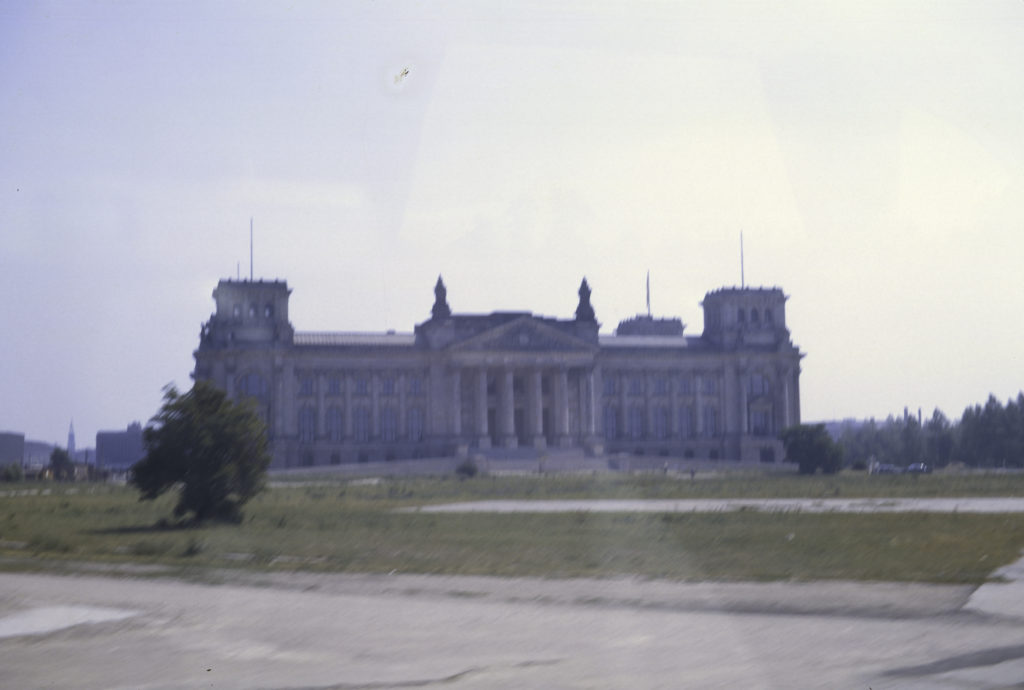
Brandenburger Tor (Brandenburg Gate)
Located a block south of the Reichstag, the Brandenburg Gate is perhaps Berlin’s and Germany’s most famous monument. It was built in the late 18th century at the orders of Prussian King Frederick William II. The architectural style is neoclassical, and on top of the Gate there is a sculpture depicting four horses drawing a chariot driven by Victoria, the Roman victory goddess. The Gate was badly damaged during World War II, and the Quadriga was shattered, but after the war the governments of East and West Berlin restored it, Quadriga and all, in a joint effort. During the Cold War it marked the boundary between East and West Berlin, and until the Berlin Wall was erected in 1961, people and vehicles could pass freely through it, but when the Wall went up it was closed. It remained closed until 1989.
On June 12, 1987, U. S. President Ronald Reagan made his famous “Mr. Gorbachev, tear down this wall!” speech at the Brandenburg Gate. Two years later, after the “Peaceful Revolution” in East Germany in the fall of 1989, the Berlin Wall came down, and on December 22, 1989, the Brandenburg Gate was reopened.
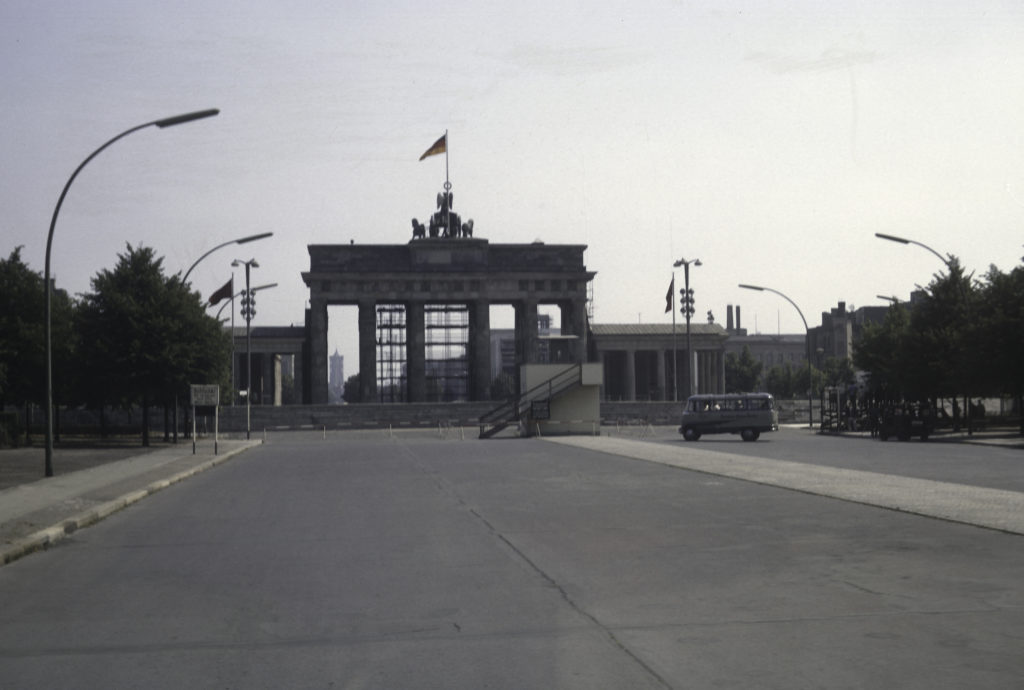
The Tiergarten – Soviet War Memorial
The Brandenburg Gate is located at the east end of the Tiergarten, a large inner-city park in West Berlin, 520 acres in size. The Tiergarten began as a royal hunting ground for the Elector of Brandenburg; after Brandenburg became the Kingdom of Prussia, King Frederick II (the Great), who had little interest in hunting, initiated its transition into a public park. When the Red Army took Berlin in 1945, the Soviets built a memorial to their war dead in the Tiergarten (pictured below), but unfortunately for them, when the city was divided up between the victors, the Tiergarten turned out to be in the British sector. Though the British graciously allowed the Soviets to keep an honor guard at the memorial, after the Berlin Wall went up the monument became inaccessible to East Berliners, so the Soviets had to build a new war monument in East Berlin for their edification.
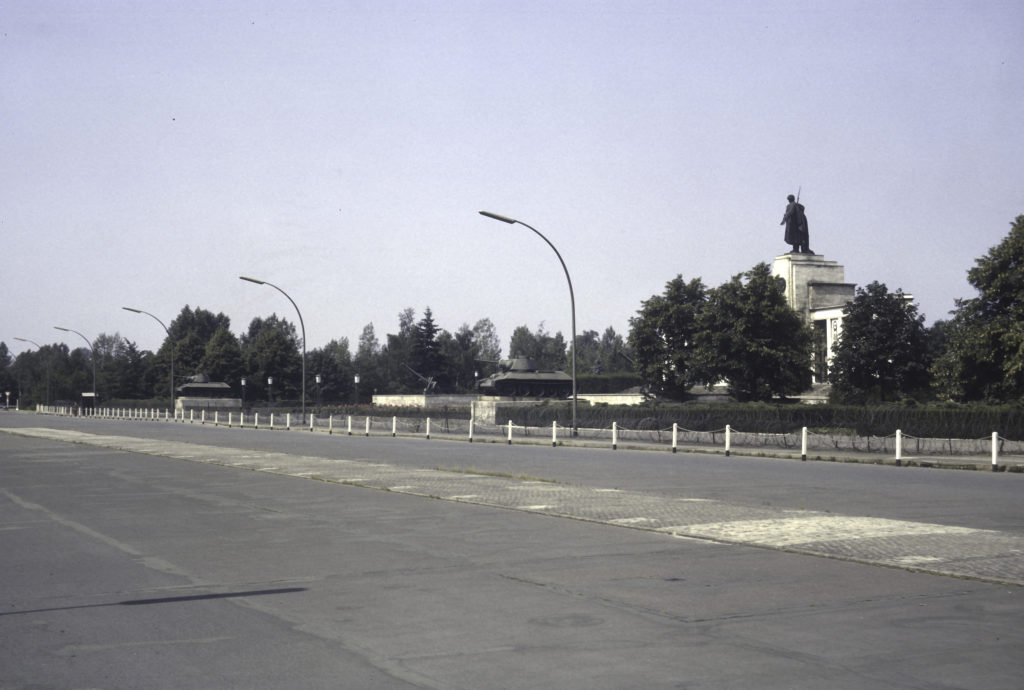
Atop the memorial there is a statue of a Red Army soldier, and there are tanks and howitzers positioned around it. The memorial also marks the burial site of 2,000 of the 80,000 Red Army soldiers killed in the assault on Berlin. (Since at least 8 million Soviet solders died in World War II, not to mention another 18 million civilians, I don’t begrudge the Russians a war memorial anywhere in Berlin.) Today the memorial is maintained by the City of Berlin. Unfortunately, I took the photo shown below in great haste, thus contriving to obscure the central section with a lamppost.
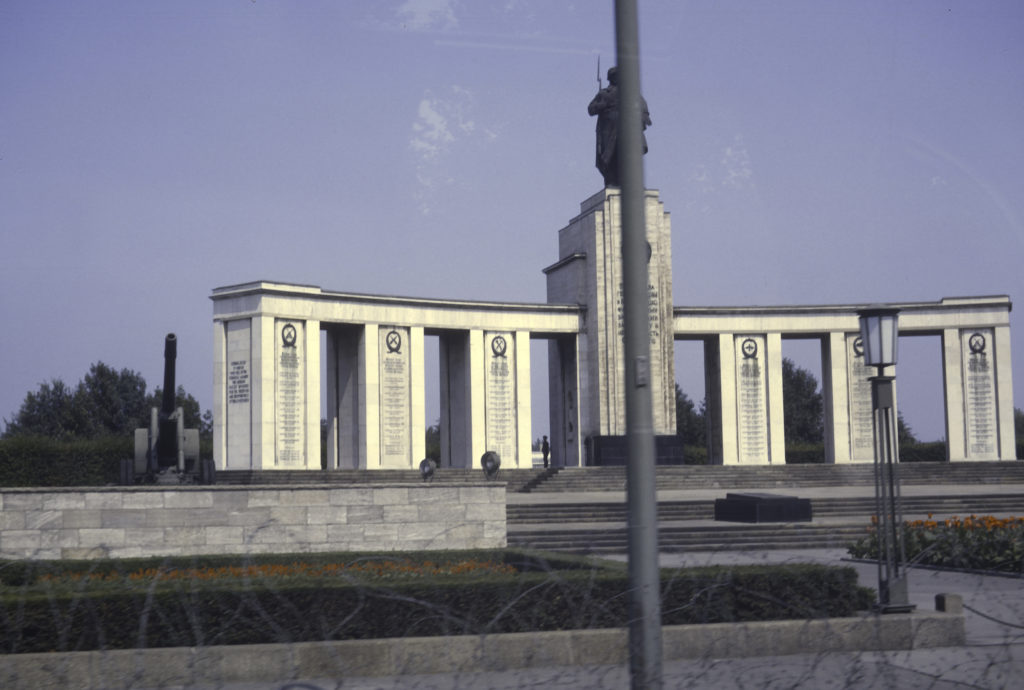
Die Mauer – the Berlin Wall
When I visited in July 1964, the Berlin Wall had been up for three years and would stand for another twenty-six. Nobody knew then if it would ever come down. You could read all you wanted about it and see programs about it on TV, but none of that ever prepared you for seeing it in person. The watchtowers and barbed wire and hedgehogs, the guards with machine guns, the crosses and wreaths marking the places where East Germans died trying to get out, really brought home to you the difference between East and West. It was ugly, dismal, depressing.
At intervals along the wall there were platforms with stairs where you could climb up and get a look at East Berlin. Most often what you saw was a wide no-man’s land between the built-up area on the east side and the wall. For the edification of Westerners, the East Germans had put up signs at intervals to assure them how miserable life was on the West side of the wall in contrast with the socialist paradise of East Germany.
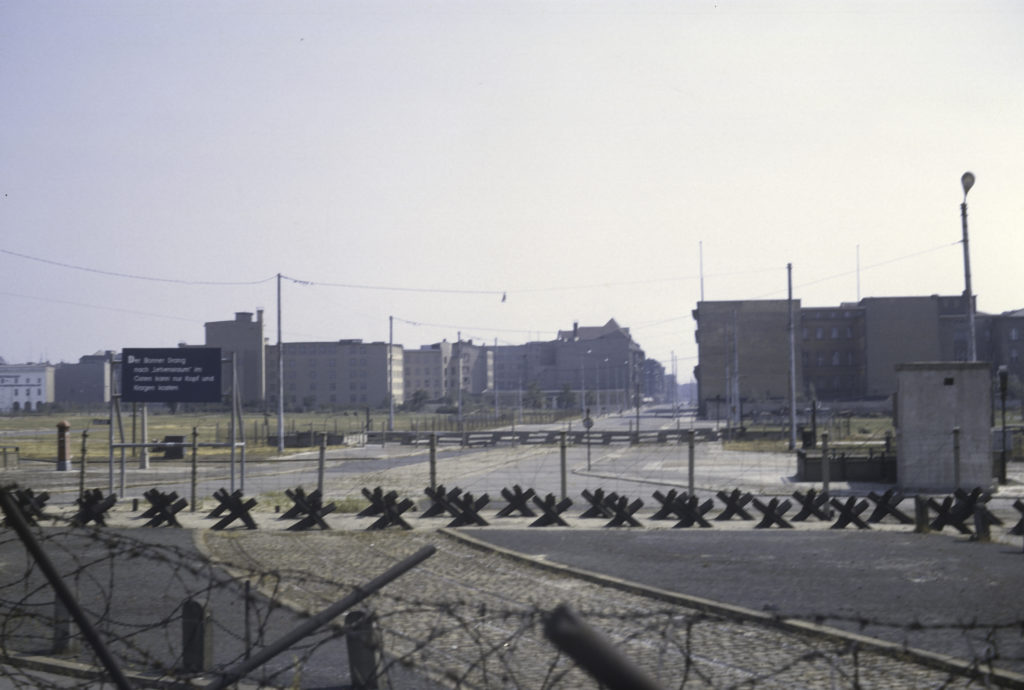
In some areas there were still buildings remaining close to the east side of the wall. These appeared to be were vacant hulks which had been gutted by bombing during WWII and had not been rebuilt after the war. There were also wide empty spaces on the Western side of the wall – my guess is that the buildings there had also been bombed in the war and that the West Berliners had cleared away the rubble afterward. In any case, all these areas look very different today.
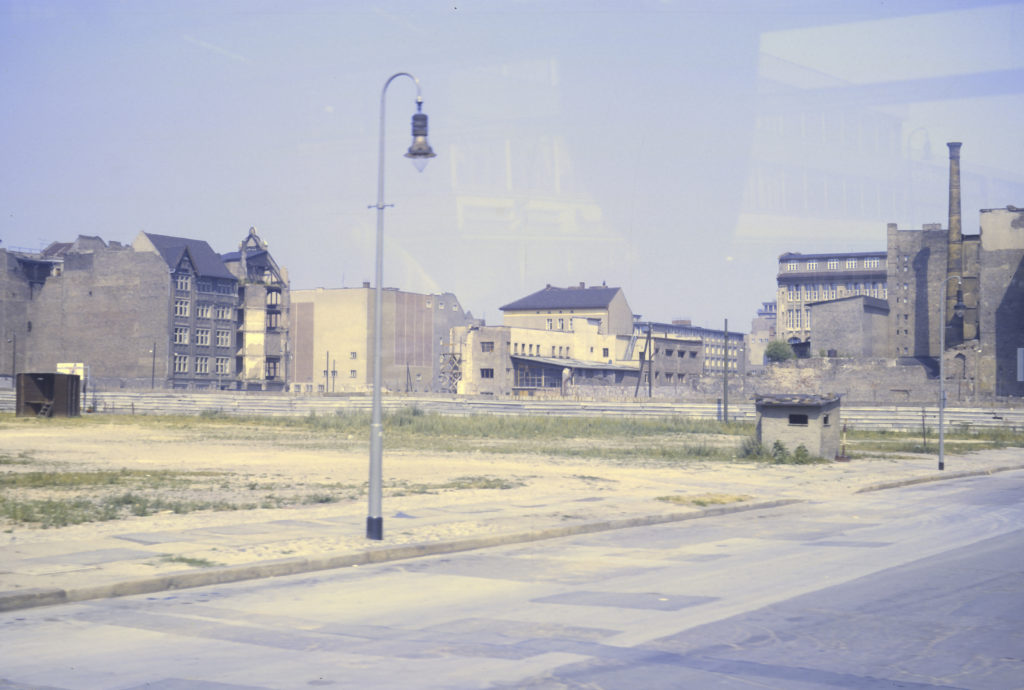
When the Wall was built, buildings directly in its path were wholly incorporated into it. The occupants were forced to leave and the windows were bricked up. In the picture below, there are two crosses and a wreath placed in memory of people who were killed trying to get over the Wall.
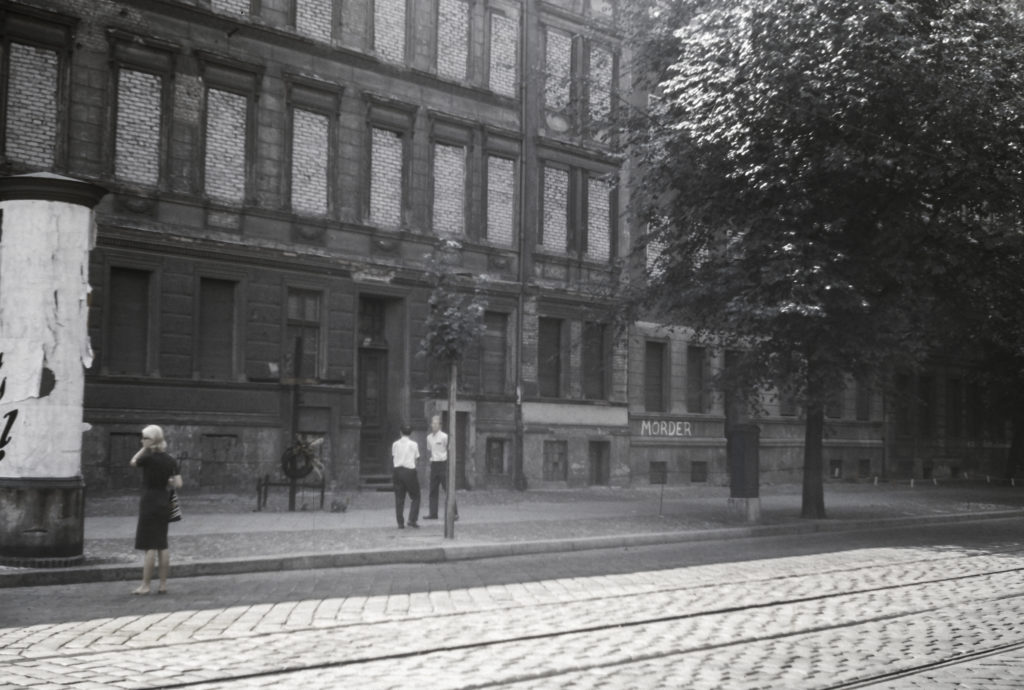
If you were in East Berlin, and you wanted to escape over the wall, you would first have to get through a wire fence, then pass through rows of steel hedgehogs (these of course were meant to stop vehicles, not people), then run across an open space and cut your way through a jungle of barbed wire, all the while being shot at by guards with rifles and machine guns. Nevertheless, many people tried; some succeeded (about 5000, according to Wikipedia) and some died (136 to 200, according to the same source).
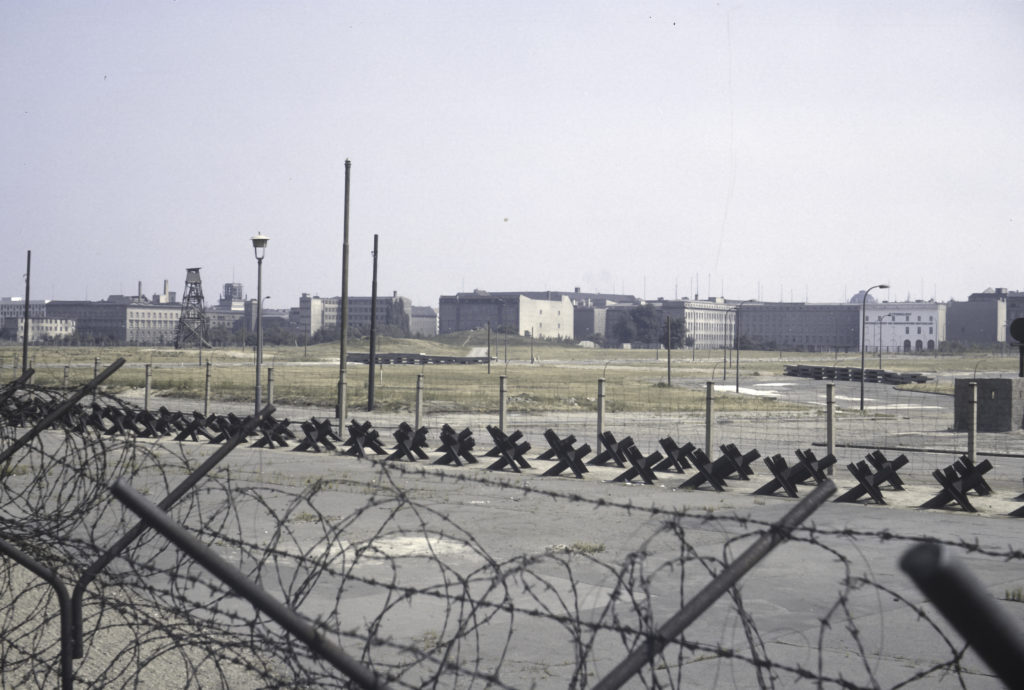
Checkpoint Charlie
In Berlin there were two points at which Westerners could enter the Eastern sector – the Friedrichstrasse railway station and Checkpoint Charlie. Our group crossed via the railway station, since we were boarding a train there, but before we went to the station we made a stop at Checkpoint Charlie. The sign at right says “Attention – Sector Boundary.”
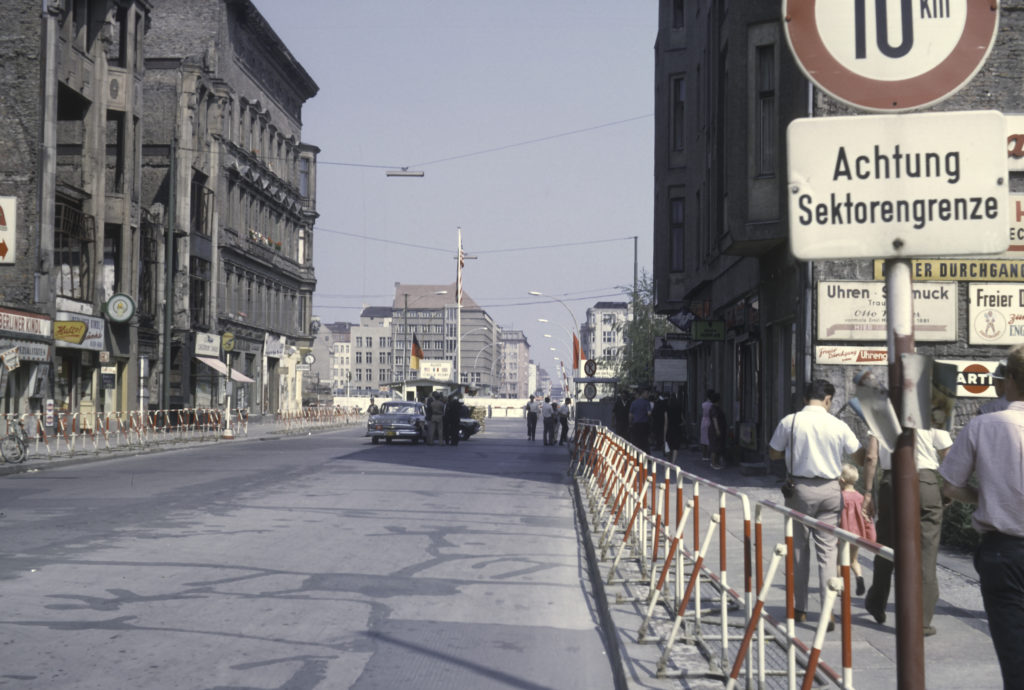
The Western post of Checkpoint Charlie consisted of a plain wooden shed, as seen in the picture below. On the Eastern side, there was, in addition to the Wall, a watchtower, a series of zigzag barriers, and a multi-lane facility where cars were stopped and searched. When the Wall was initially erected, the barriers were somewhat makeshift, and people had been able to escape by crashing cars through the gates, or in some cases, driving low-slung cars with windshields removed under the barriers. In response the East German government constructed the elaborate arrangements which were in place by the time I visited.
